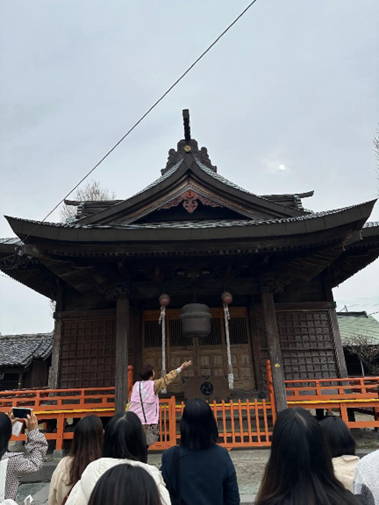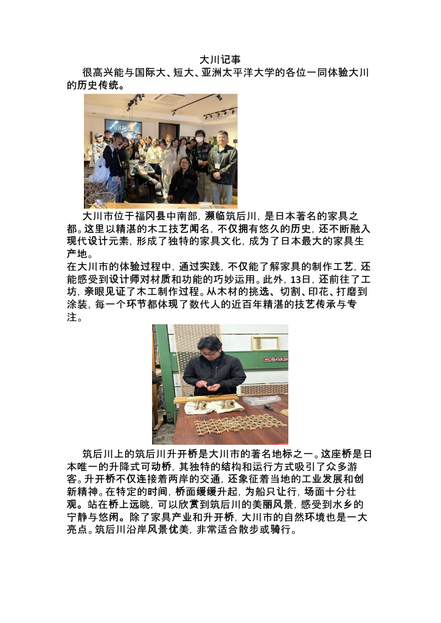This site is available in multiple languages. Please select your preferred language from the bar at the bottom right.
Craft Kyushu | A report from an international student living in Kyushu about the real experiences and excitement of traditional crafts

Hepeng WANG
Okawa report

I am very excited to have the opportunity to experience the history and traditions of Okawa together with students from the International University of Japan, the Junior College of Japanese Studies, and the Asia Pacific University.

Okawa City is located in the south-central part of Fukuoka Prefecture, facing the Chikugo River. It is famous as a production center of Japanese furniture. Renowned for its exquisite woodworking techniques, this area has a long history, but also continues to incorporate modern design elements, forming a unique furniture culture and becoming Japan's largest furniture production center.
During the experience in Okawa City, participants were able to not only understand the furniture manufacturing process through practical training, but also feel the designer's ingenuity in materials and functions. On the 13th, participants visited a workshop and observed the woodworking process. Every step of the process, from wood selection, cutting, printing, polishing, and painting, reflects the exquisite craftsmanship and concentration of nearly 100 years spanning several generations.

The Chikugo River Overpass, which spans the Chikugo River, is one of the famous sights in Okawa City. This bridge is the only lift-type movable bridge in Japan, and its unique structure and operability attract many tourists.
The Shokai Bridge not only connects traffic on both sides of the strait, but also symbolizes the local industrial development and innovative spirit. At certain times, the bridge deck slowly rises to allow ships to pass, creating a spectacular sight. Looking out into the distance from the bridge, you can enjoy the beautiful scenery of the Chikugo River and feel the tranquility and leisure of the water town. In addition to the furniture industry and Shokai Bridge, Okawa City's natural environment is also a highlight. The Chikugo River is a beautiful place for walking and cycling.

Through my internship in Okawa City, I was able to gain a deeper understanding of the development of Japan's furniture manufacturing industry, as well as a realization that the traditional techniques and innovative spirit of the local people are being passed down, which is both the culmination of the efforts of the local workers and their heritage.
At the same time, the technical skill and human feelings shown by the Chikugo River Bridge are impressive. Whether it is traditional Chinese culture or traditional Japanese culture, today there are very few people who are engaged in such work. With the development of science and technology and the improvement of productivity, the era of handicrafts is gradually disappearing. However, those who love it still continue to persevere. Is it the era that made this technology possible, or is it this passion that made this era possible?
Report
Chinese (Simplified)






